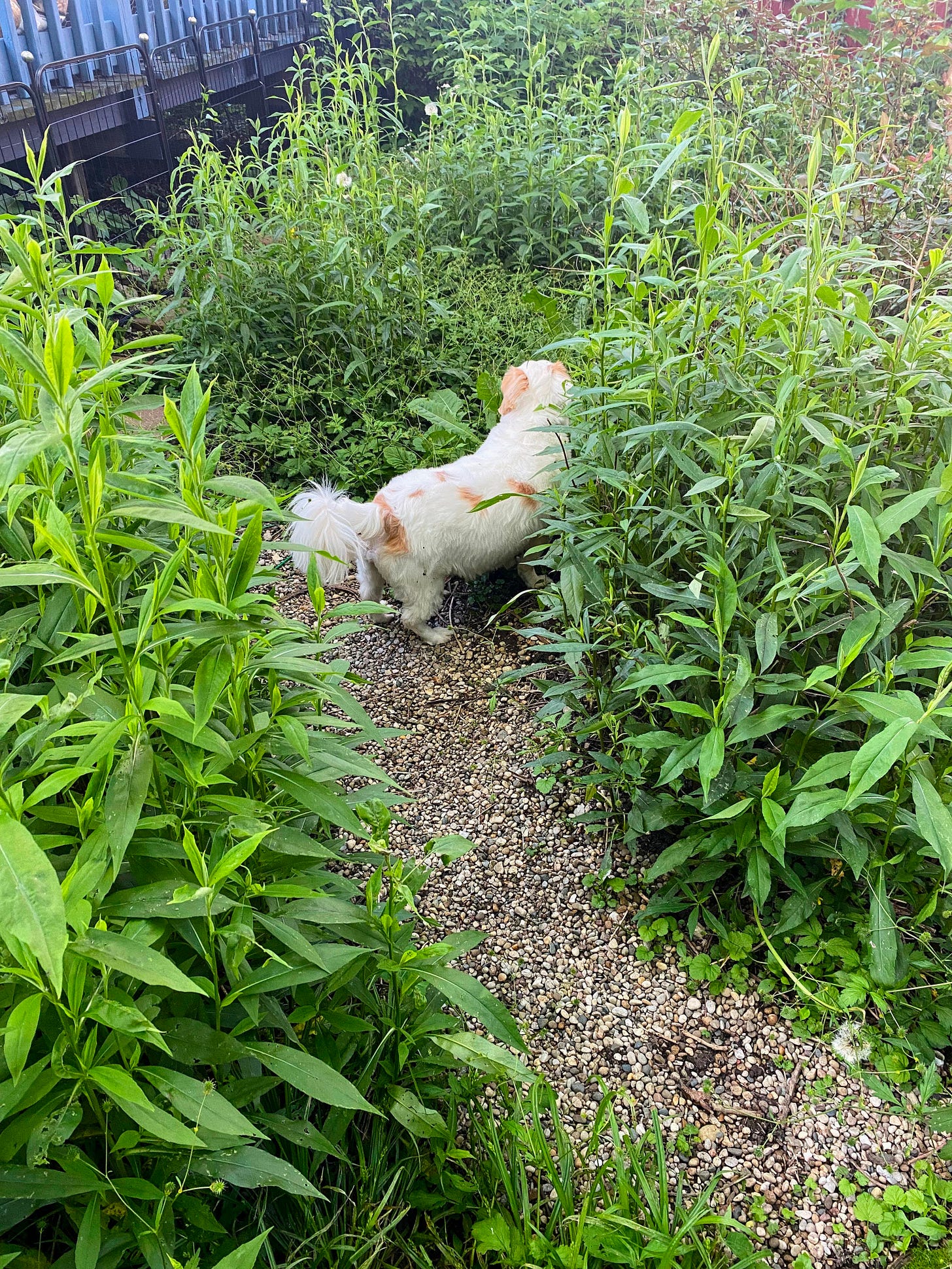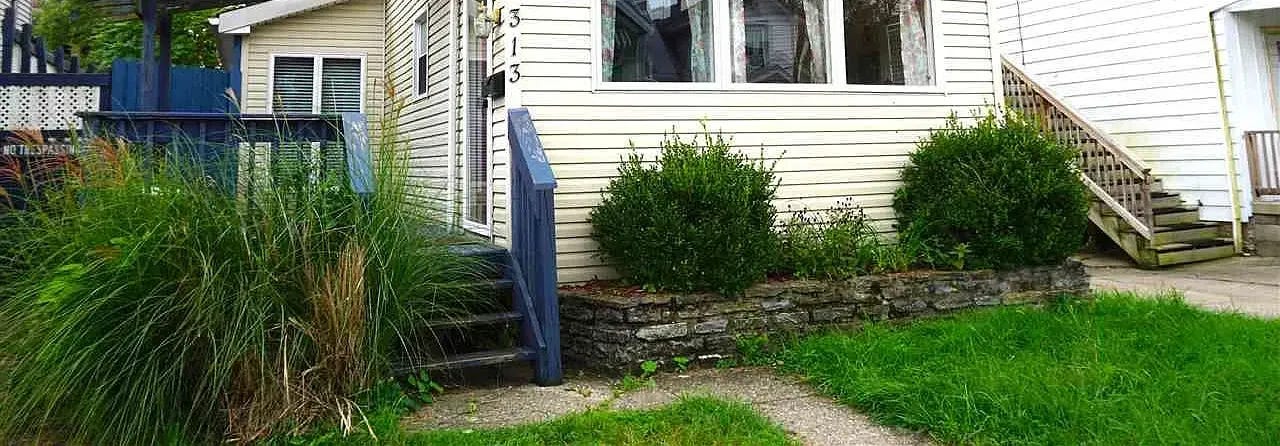Native gardening doesn’t have to be expensive
Hi friend,It’s a common misconception that you need to spend a lot of money to grow a native garden (or my preferred term, an eco-garden). In reality, it’s much cheaper than a traditional garden. Eco-gardening means applying sustainable and regenerative practices to your yard. This can look like using materials already on site, making your own compost, and relying on natural processes to do a lot of the work. It’s been a little over three years since I started transforming my yard.My front yard started as a traditional lawn. The backyard was overtaken by invasive plants and Japanese beetles. Have I been steadily chipping away and working hard at this project over multiple years? Yes Have I spent a substantial amount of money on it? Absolutely not At this point, my backyard is almost entirely native volunteers.
This means the plants showed up on their own. I didn’t even plant them, much less purchase them. It’s quite amazing how many native plants show up from the existing seed bank once you’ve gotten rid of the invasives and made room for them. My front yard, on the other hand, has been a proper Kill Your Lawn type project.It started with just turf grass (though many species of turf grass are invasive in the US!). Now the grass is gone, and it’s all native flowers.
My front yard right now, spring of 2025:So, did that part cost a lot of money? Also no. Here is a loose breakdown of what I’ve purchased since 2022 to turn my yard into an ecological garden:
Things I’ve used to convert my yard into an eco-garden that didn’t cost me money:
Total spent on my eco-garden since 2022The total spent including the seeds that I’ve made a profit from = ~ $505 since 2022 Total spent not including the seeds because I made a profit and most of them didn’t go to my yard = ~ $394 since 2022 It’s been a little over three years. So that equals approximately $168/year or $131/year, depending on whether we’re counting the seeds. And these are not ongoing costs, they’re mostly one-time purchases. There’s not much else I need to buy for my yard, but I’m sure I’ll make other purchases as time goes on, such as:
I’m sure I’m forgetting some things, but you get the picture. I haven’t spent a whole lot of money on the 3+ year project of turning my yard into an eco-garden. You certainly CAN spend a lot of money on an eco-garden if you want to.You could hire someone to do the installation and buy all the plants instead of starting from seed. That’s a totally valid way to do it, but it’s not the only option if you’re on a budget. And if you do choose to outsource labor and plants, you’re still saving all the recurring expenses that traditional gardens have. Expenses you don’t have to worry about with an eco-garden:
The whole point of making an ecological garden is to create a healthy, self-sustaining ecosystemIt shouldn’t require a ton of input from you once it’s established. There’s plenty of trial and error along the way, like most things worth doing. But it’s not an endless fight for control like a lawn or traditional landscape. So if you’ve been putting off killing your lawn and planting native, here’s my proof that it doesn’t have to be expensive. P.S. My offer, The Natural Gardener Workbook Bundle, is currently on sale for a limited time! These three essential digital workbooks will help you plan your garden, deal with invasive species, and improve your soil and plant health with compost. Check it out here.
|
Native Yardening
Ecologist helping North American growers use their yards to help fight the climate crisis 🌻
Hi friend, Something I hear a lot from people when I’m discussing invasive plants is, “But my parent/grandparent/sibling/friend, etc. gave me this plant as a gift, and that person has since passed away. It has sentimental value to me, and I don’t want to get rid of it.” Interestingly, this seems to happen a lot with butterfly bush (Buddleja davidii), a very harmful but popular invasive species across North America. Perhaps it’s bad luck to gift someone this invasive shrub 😉 (just...
Hi friend, When I started my eco-garden, my yard was absolutely overtaken by invasive plants. English ivy, burdock, wintercreeper, Amur honeysuckle, rose of Sharon, ground ivy, and garlic mustard just to name a few. And the first step toward getting rid of the invasive species and letting in volunteer native plants is knowing what’s growing. It’s common for gardeners to just broadly pull “weeds” without really knowing what they’re pulling. Then you end up accidentally killing free native...
Hi friend, We've all heard that monarch butterfly populations are declining. But what should we do (and not do) to help them? The way we protect monarch butterflies is by restoring their wild habitat, avoiding insecticides, and planting native. When humans try to further interfere with nature by captive rearing monarchs or keeping caterpillars away from predators, it does more harm than good to the overall population. It’s easy to think, “Well, monarch populations are decreasing, so the...

